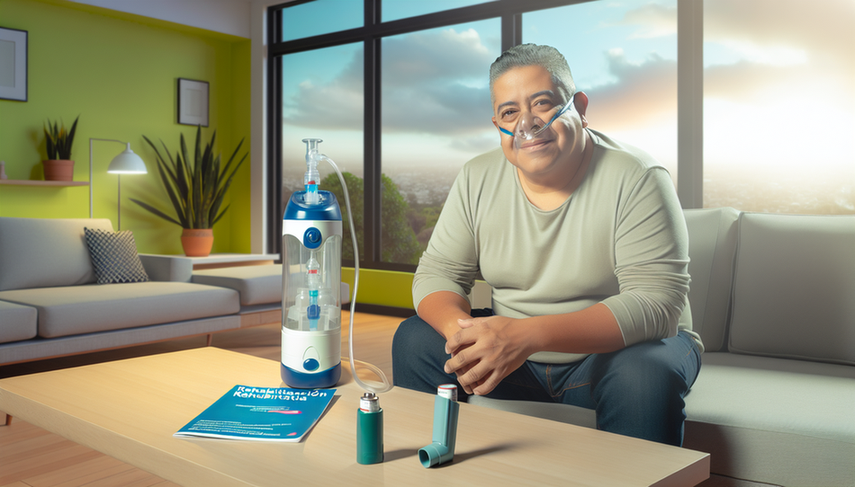Effective COPD Treatment: Bronchodilators, Corticosteroids, Home Oxygen, and Pulmonary Rehabilitation Strategies

Chronic obstructive pulmonary disease (COPD) is a respiratory condition characterized by persistent airflow obstruction and chronic respiratory symptoms. Effective COPD treatment focuses on alleviating symptoms, improving quality of life, and reducing the risk of exacerbations. Among the most effective therapeutic strategies are the use of bronchodilators, pulmonary rehabilitation, and home oxygen.
Diving Deeper into COPD Treatment
Bronchodilators are the cornerstone of pharmacological treatment for COPD. These medications, which include long-acting beta-2 agonists and long-acting muscarinic antagonists, help relax the muscles of the airways, thereby improving airflow and relieving dyspnea. Studies have shown that the use of bronchodilators significantly reduces the risk of severe exacerbations and improves the quality of life for patients with COPD [1].
Pulmonary rehabilitation is an essential component of the non-pharmacological management of COPD. This multidisciplinary program includes physical training, education, and psychological support, and has been shown to improve exercise capacity and quality of life for patients [2]. Despite its benefits, pulmonary rehabilitation remains underutilized, with only a small percentage of patients receiving this treatment [3].
Home oxygen therapy is crucial for patients with chronic hypoxemia. The use of home oxygen has been shown to improve survival in patients with severe COPD and low oxygen levels at rest [4]. Additionally, oxygen therapy during exercise can be beneficial for patients without severe hypoxemia, improving their exercise capacity and reducing dyspnea [5].
Conclusions
Managing COPD requires a comprehensive approach that combines pharmacological and non-pharmacological treatments. Bronchodilators, pulmonary rehabilitation, and home oxygen are fundamental pillars in COPD treatment, each significantly contributing to improving quality of life and reducing exacerbations. The implementation of these strategies should be personalized, taking into account the individual characteristics of each patient to optimize outcomes.
References
- [1] Impact and prevention of severe exacerbations of COPD: a review of the evidence.
- [2] Pulmonary rehabilitation for COPD.
- [3] Pulmonary Rehabilitation: Where We've Succeeded and Where We've Failed.
- [4] Diagnosis and management of stable chronic obstructive pulmonary disease: a clinical practice guideline update.
- [5] Spanish COPD Guidelines (GesEPOC 2021): Non-pharmacological Treatment Update.
Created 2/1/2025
